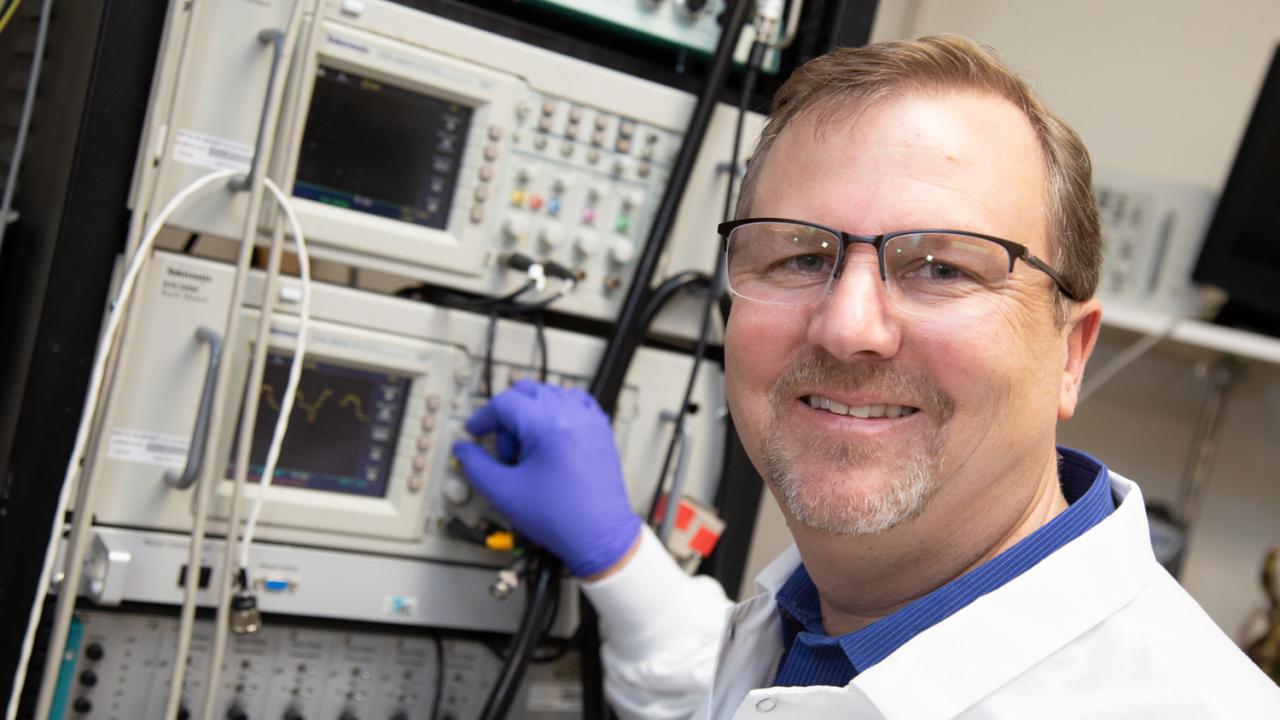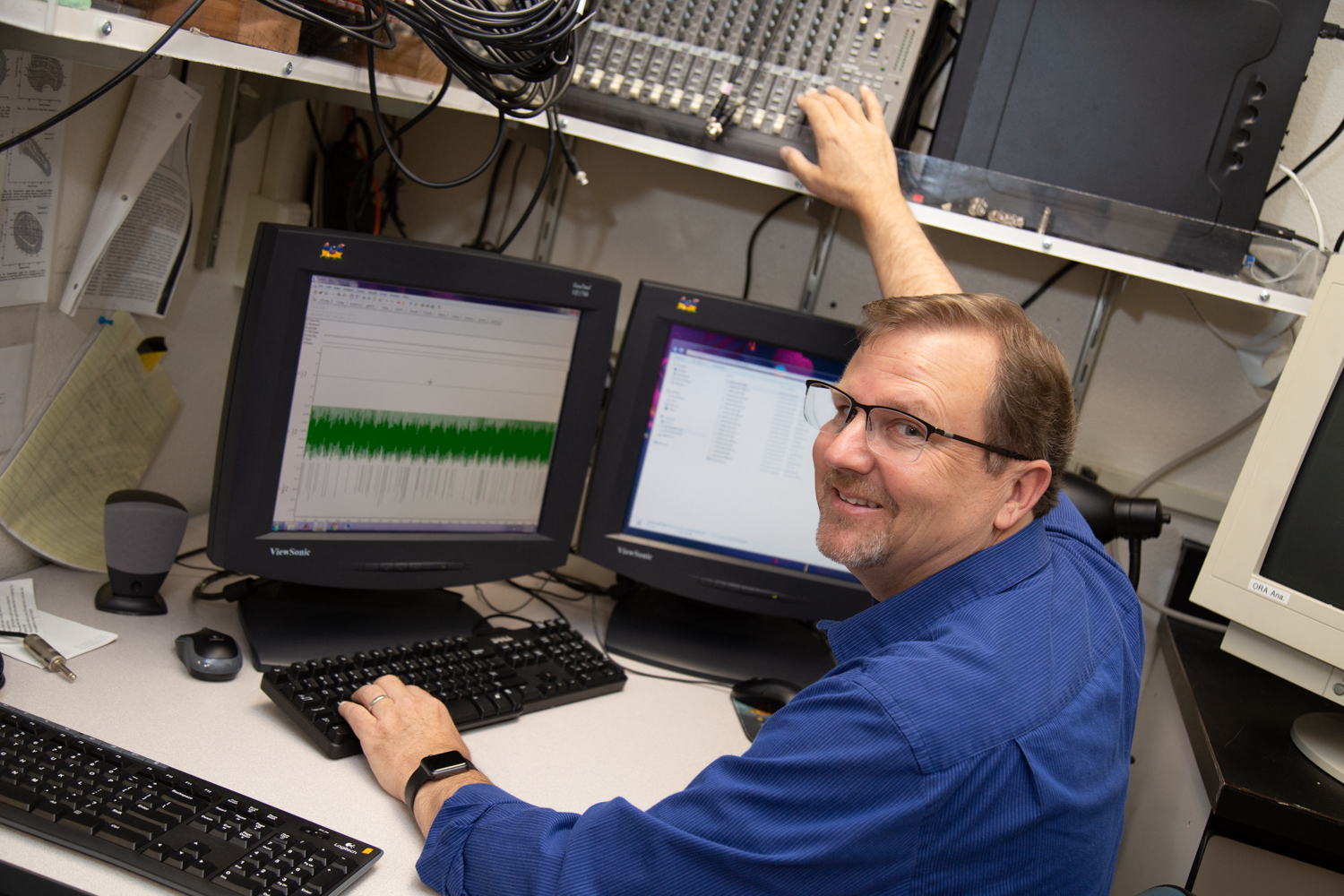
Exploring Vision, Perception and Behavior: W. Martin Usrey Named Barbara A. Horwitz and John M. Horowitz Endowed Chair in Physiology
Quick Summary
- The Barbara A. Horwitz and John M. Horowitz Endowed Chair in Physiology was created in 2004
- Usrey will hold the appointment for five years
- The endowment will support his research in visual perception, teaching and service activities
Amblyopia, or reduced vision from one eye, affects approximately two to three of every 100 children, according to the National Eye Institute. Today the disability is correctable, but it wasn’t until the 20th century that scientists realized the eye wasn’t responsible for the condition. Its origin was in how the eye and brain worked together.
“Back in the day, no one realized that there was a ‘critical period’ in childhood, where this could be corrected,” said Professor W. Martin Usrey, chair of the Department of Neurobiology, Physiology and Behavior. “Through basic science, that was discovered.”
In 1981, David H. Hubel and Torsten N. Wiesel won the Nobel Prize for their discoveries concerning the visual system. They and others revealed that visual information travels through a complex network of brain cells, where its component pieces are broken apart and sent to different areas of the brain for processing, eventually forming an image.
Through experiments, the researchers found that columns of brain cells developed for each eye in the visual cortex, with critical development of these columns and their interactions occurring during childhood. The realization that the brain played just as large a role in vision as the eye led to development of the medical interventions used today to correct amblyopia.
“Basic science research is exploration,” said Usrey, who was mentored by Wiesel early in his career. “It’s going out into the unknown and figuring out how things work. And it’s only by knowing how things work and making that discovery that you can then say, ‘How can that discovery be used?’”

Supporting physiology research
Recently, the UC Davis College of Biological Sciences named Usrey, a neurobiologist interested in the physiology of vision, to the Barbara A. Horwitz and John M. Horowitz Endowed Chair in Physiology. Usrey will hold the appointment for five years, with the endowment supporting his research, teaching and service activities. Distinguished Professor Emerita Horwitz and Professor Emeritus Horowitz created the endowed chair in 2004.
“It’s a great honor for many reasons, but for me in particular, it’s being able to do research under the name of Barbara Horwitz and John Horowitz,” said Usrey, who also holds appointments in the Center for Neuroscience and the Department of Neurology in the School of Medicine. “They have done so much for the university. To be associated with their legacy is really quite special.”
College of Biological Sciences Dean Mark Winey said, “This appointment isn’t just a recognition of Dr. Usrey’s past accomplishments, but an acknowledgment of his continuing efforts to advance our understanding of the role the brain plays in vision.”
An entry into visual systems
Usrey began studying visual systems while pursuing a Ph.D. in Neurobiology at Duke University. While working in neurobiologist David Fitzpatrick’s laboratory, he became fascinated with comparative physiology and focused his attention on the tree shrew, a small squirrel-like mammal from Southeast Asia that is considered a close relative of primates.
According to Usrey, the tree shrew has a very complex brain that is packaged in a small space and efficiently organized. Usrey likened it to uncooked spaghetti pasta, with one able to neatly follow threads of connection from the eye to various parts of the brain. This makes it an ideal organism for studying the visual pathway.
But evolution is a complex weaver of traits and as a result, not all mammals have such neatly organized brains.
“You can also take that same pack of spaghetti and then mix it all up, cook it and now, it’s just a big web,” said Usrey. “The connections may be just as precise, but going in as an experimentalist, it’s very difficult to understand because you don’t have that organization.”
By taking a comparative approach, researchers can gain insight and uncover brain mechanisms that otherwise might be impossible to unravel.

Knocking on the doors of perception
Today, at the UC Davis Center for Neuroscience, Usrey studies the physiological mechanisms responsible for vision, exploring the relationships between cell physiology, circuit activity, behavior and perception.
At the back of the eye exists a group of cells called retinal ganglion cells. Primates, including humans, have more than 25 different classes of these cells, with each class processing a component of the visual scene and sending it to different areas of the brain.
Usrey’s research concerns the electrical signals that travel through the optic nerve to the thalamus and on to the primary visual cortex. Once there, these signals are further processed and sent to other visual cortical areas, which include hubs responsible for the processing of color and movement, among other aspects.
“An individual neuron in the visual cortex receives input from many sources, so there’s a lot of convergence and integration that’s taking place,” Usrey said. “What distinguishes our group is that to understand things, we often record from neurons at multiple stations in the brain simultaneously, so that we can watch the transfer of information occur from cell to cell to cell in real time.”
Currently, Usrey and his lab are studying how behavior affects this relaying of visual signals. Understanding this relationship could provide insights into visual and cognitive impairments.
Spatial attention and human health
One phenomenon Usrey and his colleagues are dissecting is spatial attention, the ability to focus on a specific place in the visual field without moving the eyes. Imagine you’re in a staring contest, but something behind your competition attracts your attention, say a red ball flying through the air. Without breaking eye contact, you’re capable of shifting your mental attention to that ball.
“Even though you haven’t moved your eyes, your brain is enhancing the processing of signals that are coming from that region in space,” Usrey said. “It’s something entirely internal.”
Further investigation of neural processes governing peripheral vision and spatial attention could help researchers understand things like attention deficit disorders. But Usrey said it may also hold implications for those with Alzheimer’s disease.
Usrey and colleagues suspect that brain cells and synapses in an area of the brain called the basal forebrain are highly active during such spatial attention tasks. This part of the brain also degrades in those afflicted with Alzheimer’s disease.
“Understanding attention in the non-diseased brain is fundamental because you need that information in order to test hypotheses for things like attention deficit disorder or models for Alzheimer’s,” he said.
Usrey sees the endowed chair appointment as an opportunity to not only promote high-risk, high-reward studies but also to promote student research experiences in his lab.
“I’ve decided to focus the opportunities that accompany the endowed chair on things that are important to Barbara and John and equally important to me,” he said.

